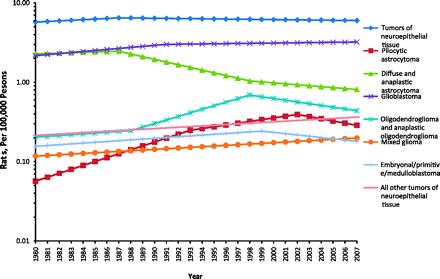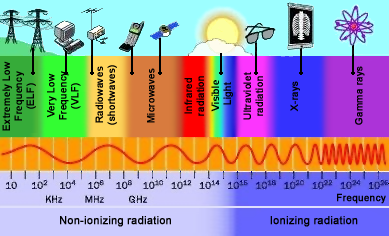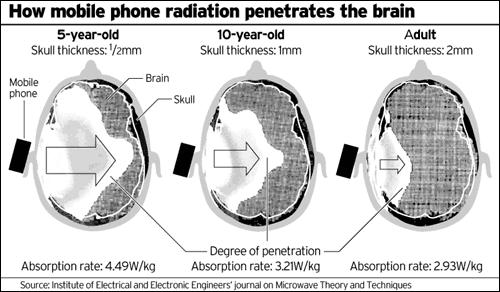If you’ve watched the news in the past day or so, or followed any health-related twitter feeds, no doubt you’ve seen the reports that the radiofrequency electromagnetic radiation produced by cell phones has been classified as Group 2B potential carcinogen (press release) by the WHO/International Agency for Research on Cancer (IARC). I have read that the official publication will be up in a few days on The Lancet website.
A recent CDC report found that in the US, more than a quarter of households are now wireless-only (including yours truly), and among the below 30s and renters, this percentage is closer to 50%. A natural question arising as a result of this WHO announcement might be whether you should run out and get a landline again, or is this really much ado about nothing?
What did the report actually say?First of all, what exactly is a Group 2B carcinogen? The WHO describes carcinogenicity of an agent by classifying into 5 groups as described below taking into account a variety of information including whether humans are exposed to it, epidemiological evidence of association with cancer risk in humans, laboratory studies in animal models supporting cancer risk and mechanistic information. The classifications are:
Group 1 – Carcinogenic to humans (eg alcohol, aflatoxin B1, benzene)
Group 2A – Probably carcinogenic to humans (eg night shift work, diesel exhaust, many chemotherapeutic drugs)
Group 2B – Possibly carcinogenic to humans (eg the pesticide DDT, gasoline exhaust, lead, and coffee!)
Group 3 – Not classifiable as to its carcinogenicity to humans (eg hydrogen peroxide, melamine, chlorinated drinking water)
Group 4 – Probably not carcinogenic to humans (the only example is caprolactam)
The IARC likely classified cell phone radiation as “possibly” instead of the stronger “probably carcinogenic” since although there have been a number of conflicting epidemiological studies looking for a relationship between glioma risk and cell phone use, there remains a question about causality due to the lack of laboratory studies in model organisms, and the fact that the relative risk increase isn’t particularly large.
The largest study performed to date was the INTERPHONE study published last year, which was an international case-control study looking at 2708 cases and 2409 controls from 13 countries, which found no significant increase in either glioma or meningioma risk in cell phone users with 10 years of exposure information. In fact, they found a slight opposite trend, which they attributed to potential sampling bias or methodological concerns with accurately determining the dose of radiation received. The one result that may be suggestive of a negative effect was found in the highest exposure group – that is those who had reported >1640 hours (~30mins/day over 10 years) of calls without using a handsfree device — there was an odds ratio of 1.40 meaning a 40% increase in relative risk of gliomas (which at a baseline is only 4-5 per 100,000 people in the US). Most true carcinogens however possess a dose-response such that exposure correlates with tumorigenesis over a range of values, which was not observed in this dataset.
Can we really know yet? What is the mechanism?Cancer is a multi-step process that results from accumulation of mutations (and we’re now appreciating, epigenetic changes) in multiple genes that often takes many years. It has been estimated that for most solid tumors, these ‘hits’ occur over a span of 10-20 years. Given that cell phone use has only been widespread about 10 years, there is significant concern that if there truly is a link, it might still be too early to detect changes in incidence of gliomas, which are not one of the tumor types we can easily detect at an early stage. Current incidence data as shown in figure 1 (from a recent NCI report) does not support the claim that increasing cell phone use can be causally linked to gliomagenesis.

Figure 1: Glioma incidence over time
Only time will tell whether these curves remain constant or the slope changes. Even if the epidemiological evidence demonstrates an elevated risk of gliomas, the question of mechanism is still elusive.
Radiation can be designated as either ionizing or non-ionizing based on its wavelength as depicted in figure 2.

Figure 2: Spectrum of radiation (from http://www.astrosurf.com/luxorion/qsl-em-radiation.htm)
Cell phones as you can see, give off long-wave, non-ionizing radiation which does not have enough energy to break bonds, which would be necessary for damaging DNA and inducing mutations. However, radiation at this frequency has the potential to heat tissue. Whether this could lead to cancer development is an intriguing question. Radiofrequency waves have been shown in a recent study in JAMA to increase brain activity as measured by an increase in glucose uptake by PET. Any relationship between this acute response and subsequent cancer development remains tenuous.
Challenges for future researchThere remain a number of challenges in future studies. Since over three-quarters of the world’s population now uses a cell phone (and no doubt this continues to rise), finding an appropriate control group will be difficult. Even though we have historical data as a baseline, as the population ages, we would expect the incidence of age-related tumors such as gliomas to increase as well.
Secondly, as a society we are likely using cell phones differently now – many of us carry around our smartphones in our pocket all day, whereas 10 years ago when they were big and bulky and had shorter battery lives, this was less likely to be the case. Too, the large number of different models and styles of phone might potentially affect the magnitude of radiation absorbed by the cells. Since the product lifecycle of phones is now condensed into less than 2 years (even 6 months in the Android market is “old”), even analyzing whether there are associations due to good-or-bad performing phones will be difficult.
Determining exposure will continue to be a problem especially as awareness of this potential association increases – self-reporting of time spent on the phone may begin to suffer some of the inaccuracies seen in other surveys measuring diet or lifestyle factors.
The bottom lineSo coming back to the question I raised in the introduction, should we worry about cell phones or not??? No doubt you’ve all made your mind up by now, but hopefully you’ll agree that the issue is certainly not black-and-white. IMO the data isn’t really strong enough to personally stop me from using my cell phone for a call or 2 a day (at most), but if you like to chat for hours and hours, perhaps switching to a earpiece may be worth the potential embarassment, not to mention it would be safer if you’re driving or walking around a city. For some other practical tips on reducing your exposure, visit the Environmental Working Group’s page with 8 sensible-sounding pieces of advice. Cumulative dose may be the key – so minimizing exposure of children may be prudent since they will likely have decades of using such devices, increasing the chance for harm, especially since it is known that children have thinner skulls than adults (by a factor of 2-4fold) which would lead to a higher penetration into the brain parenchyma. Perhaps as a public health concern, we should lobby the carriers for free text messages for all!

Figure 3: Skull thickness by age
What say you? Will you alter your behavior as a result of this study? Do you already use a headset while on your phone?
